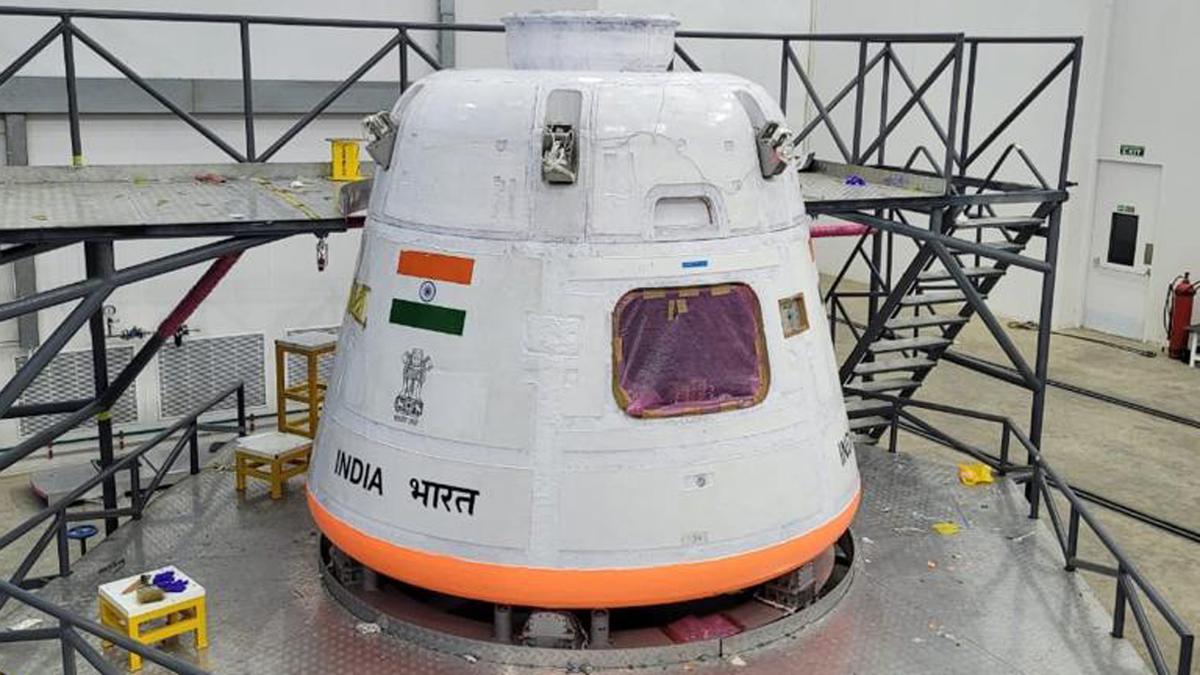
Gaganyaan mission | ISRO to commence unmanned flight tests; preparations under way for TV-D1
The Hindu
The Indian Space Research Organisation (ISRO), which is planning to commence uncrewed flight tests for the Gaganyaan mission, has started to make preparations for the Flight Test Vehicle Abort Mission-1 (TV-D1).
The Indian Space Research Organisation (ISRO), which is planning to commence uncrewed flight tests for the Gaganyaan mission, has started to make preparations for the Flight Test Vehicle Abort Mission-1 (TV-D1).
“Mission Gaganyaan: ISRO to commence unmanned flight tests for the Gaganyaan mission. Preparations for the Flight Test Vehicle Abort Mission-1 (TV-D1), which demonstrates the performance of the Crew Escape System, are under way,” the space agency posted on X (formerly Twitter).
Though the space agency has not announced the date for the TV-D1, it is expected to take place by the end of October 2023 from the Satish Dhawan Space Centre in Sriharikota (SDSC-SHAR).
According to ISRO, the Crew Module (CM) is where the astronauts are contained in a pressurised earthlike atmospheric condition during the Gaganyaan mission.
“The CM for the Gaganyaan mission is in different stages of development. For the TV-D1, the CM is an unpressurised version that has completed its integration and testing and is ready to be shipped to the launch complex. This unpressurised CM version has to have an overall size and mass of actual Gaganyaan CM. It houses all the systems for the deceleration and recovery. With its complete set of parachutes, recovery aids, actuation systems and pyros. The avionics systems in CM are in a dual redundant mode configuration for navigation, sequencing, telemetry, instrumentation and power. The CM in this mission is extensively instrumented to capture the flight data for evaluation of the performance of various systems. The CM will be recovered after touchdown in the Bay of Bengal, using a dedicated vessel and diving team from the Indian Navy,” ISRO said. It added that the TV-D1 is in the final stages of preparation.
“The Test Vehicle is a single-stage liquid rocket developed for this abort mission. The payloads consist of the CM and Crew Escape Systems (CES) with their fast-acting solid motors, along with CM fairing (CMF) and Interface Adapters. This flight will simulate the abort condition during the ascent trajectory corresponding to a Mach number of 1.2 encountered in the Gaganyaan mission. CES with CM will be separated from the Test Vehicle at an altitude of about 17 km. Subsequently, the abort sequence will be executed autonomously commencing with the separation of CES and deployment of the series of parachutes, finally culminating in the safe touchdown of CM in the sea, about 10 km from the coast of Sriharikota,” it added.
The CM after integration underwent various electrical testing, at ISRO’s facility in Bengaluru, including an acoustic test and was dispatched to SDSC-SHAR on August 13. At SDSC, it will undergo vibration tests and pre-integration with the CES, before final integration to the Test Vehicle at the Launch Pad. This Test Vehicle mission with this CM is a significant milestone for the overall Gaganyaan programmes a near-complete system is integrated for a flight test. The success of this test flight will set the stage for the remaining qualification tests and unmanned missions, leading to the first Gaganyaan mission with Indian Astronauts.

EPDCL officials assure power connections within 15 days to tribals of ASR district in Andhra Pradesh
APEPDCL officials visit tribal hamlets in ASR district, promise power connections within 15 days, resolve certificate submission issue.










